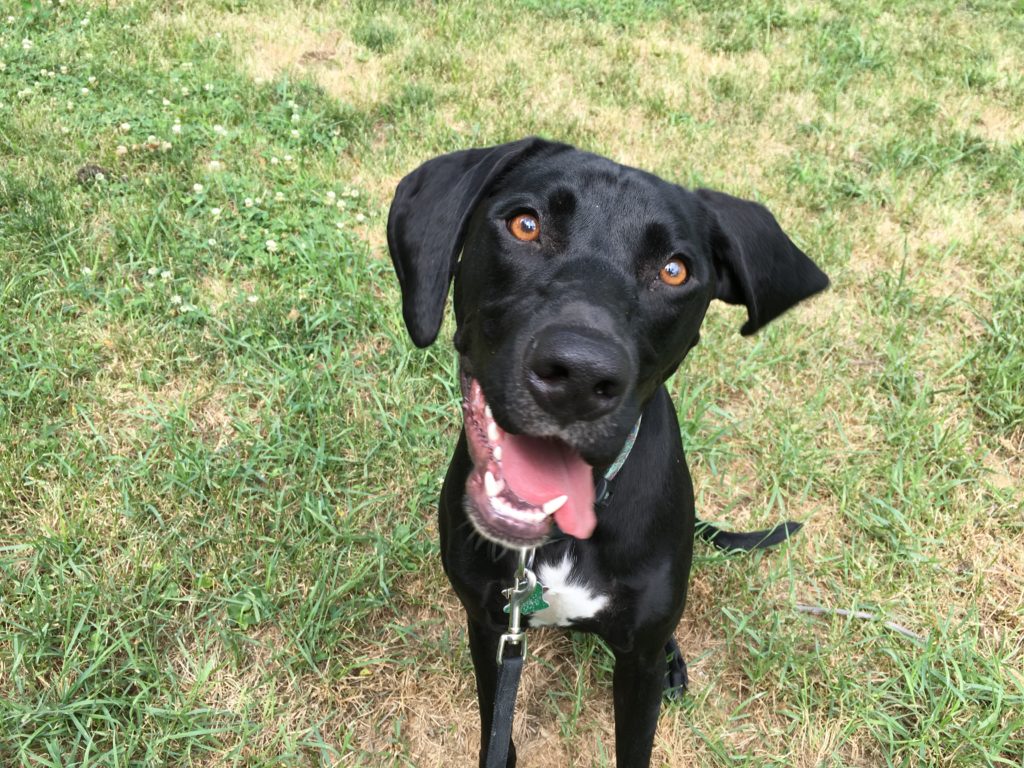Teaching a High Energy Lab Pointer Mix to Listen to and Focus on Her Guardian
By: David Codr
Published Date: July 7, 2016
Maya is a one-year-old German Shorthair Pointer Lab mix who I worked with about a year ago. Her guardian scheduled a follow up dog behavior training session due to Maya’s decreasing of responsiveness to her commands and corrections.
My original session was to primarily help with the other dog Bentley who exhibited dog aggression. I was quite happy to see how well behaved he was during the session. I also got a bit of a chuckle when Maya demonstrated how exuberant and out-of-control she was during the greeting.
I sat down to discuss the situation with the dog’s guardian and observe the dogs while we chatted. Bentley stayed consistently calm while Maya paced relentlessly, jumped up on people, nudged for attention and wiggled her way all over the room.
I knew that I needed to burn off some of Maya’s excess energy in order to effectively work with her. One of my favorite ways to do this is something that I like to call dog skiing.
While we didn’t burn off as much energy as I would’ve liked due to Maya’s refusal to pull, we did take quite a bit of the energy edge off.
Because one of Maya’s new issues was failing to recall when her guardian called her while in the backyard, she had stopped letting her out there as often as she would have liked. While I certainly understand where she’s coming from, it is our responsibility as a dog guardian to ensure that our dog is having its needs met. Asking a dog to behave while it is full of excess energy is not a reasonable request.
Now that both dogs were calm, (or in Maya’s case, calmer) I was able to have a real discussion with her guardian.
I started off by asking about the rules and structure that I had suggested she incorporate when we had our original session a year ago. She said that she kept the rules in place for a while, but as time passed, she got more lax in enforcing them. Based on how casually the dogs jumped up on the people and furniture, I assumed this was the case.
When you have multiple dogs or dogs that are challenging you (often during adolescence), having rules and structure is a great way to make sure that they see and respect the humans as authority figures. Some dogs can get by without having any rules or structure, Maya is certainly not those dogs. At least not at her current age.
When a dog is sees a human as having the same authority that they do, then listening to the human becomes entirely optional. This is one of the main reasons why Maya refused to respond when her guardian gave her the recall command while outside.
I recommended that the guardian go back to incorporating the old rules and boundaries. This structure will help Maya get used to the guardian being in the leadership position while simultaneously increasing her respect for her. Simple exercises like asking the dog to wait before the humans go through the door or down the stairs first, not allowing the dogs to sit at the same height as the humans or being allowed to be near any human who is eating can go a long ways towards helping Maya develop the proper respect for her guardian.
In addition to the rules and structure, I wanted to give Maya’s guardian some tools that will help the dog practice responding to and respecting her. I decided to utilize a reverse sit exercise that teaches the dog to focus on the guardian and follow their movements.
Some of the most important factors in the reverse sit is paying close attention so that you can lower the dog back into position when it loses focus as well as delivering the treat quick enough. Treat delivery speed has a direct correlation to how impactful the exercise is for the dog. The goal to shoot for is to have the treat waiting in front of the dog’s nose within one third of a second of them sitting down.
After practicing the reverse sit for a couple of minutes, Maya seemed to be focusing better so we swapped positions so that the guardian could practice the exercise herself.
The reverse sit is more challenging than it looks like when you first see it in the video. It takes one or two practice session before you’re able to put everything together simultaneously. But once you get it all down, its amazing how quickly the dog starts responding. I’m confident that that will be the case with Maya’s guardian.
I recommended that she practiced the reverse sit exercise with Maya a minimum of two times every day. But the more she practices, the faster and better the dog will improve. The reverse sit is very much a cumulative exercise. If you start taking a day off here and there, especially at the beginning, it really slows down the dog’s progress.
It will be important that the guardian keep the reverse sit training sessions to five minutes maximum each training session. She should also always end on a good repetition. You want to make sure the dog has a positive memory of the activity every time you finish.
After we finished practicing the reverse sit, we went outside so that I could give the guardian a couple of pointers on getting the dog to recall better amongst distractions. Teaching a dog to come is a skill that takes the right technique and practice.
Maya is most certainly a higher energy dog. Anytime you have a dog that has as much energy as she does, it is of paramount importance that you consistently deplete the dogs energy through constructive activities, the earlier in the day the better.
In order for Maya to start consistently responding to and respecting her guardian’s commands, she will need to dramatically increase the dog’s constructive exercise every day while simultaneously practicing the reverse sit and enforcing the rules and boundaries again.
It will also be important for all of the members of the household to be consistent in the application of these rules and structure. Often times I hear from clients who have one member of the house who refuses to adhere to the new plan. Although none of these people intend to do so, not being consistent with the rules and structure not only makes fixing the behavior much more difficult, it is disrespectful to everyone who is putting in the time and effort.
Because Maya is an intelligent dog and seems to want to please people that she respects, I’m guessing that it shouldn’t take long for her guardian to get the dog to see her as the authority figure. Once that is the case and the exercise is increased, Maya should stop ignoring her commands and also adopt a calm and balanced energy.
Categorized in: Dog Behavior


